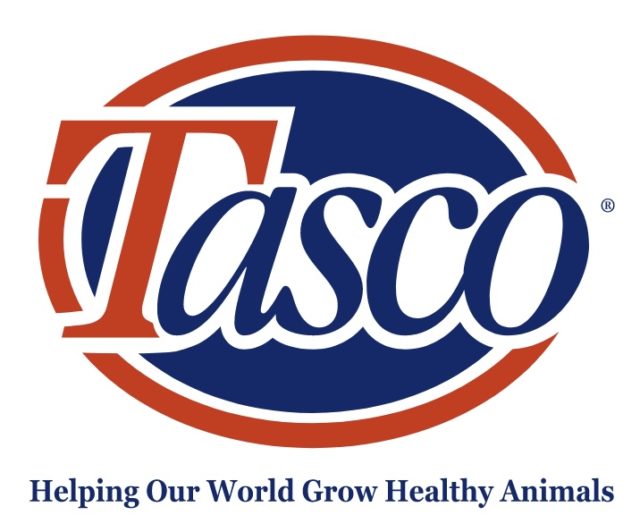For the first time in more than a year, the top five dairy exporting countries/regions produced less combined milk than 12 months earlier. USDA’s June milk estimates showed relatively strong production, but there’s still hope milk prices can stabilize and improve. Dairy margins continued to strengthen over the first half of July. This and other U.S. dairy economic news can be found here.
Has global milk production turned the corner?
For the first time in more than a year, the top five dairy exporting countries – Argentina, Australia, the European Union (EU), New Zealand and the U.S. – produced less combined milk than they did 12 months earlier, according to the U.S. Dairy Export Council (USDEC).
The downturn was not huge – only 58,000 tons – but it was notable for the shift in the EU, the biggest contributor to the global oversupply, responsible for more than 90 percent of the “new” milk produced by the five major dairy traders from April 2015-April 2016.
USDEC has created an interactive, color-coded chart, allowing readers to check a country’s milk production data compared to the previous year.
Recent moves by the European Commission (EC) could further erode those numbers. As part of a new dairy assistance package, the EC announced a voluntary bloc-wide plan that would pay farmers for reducing milk output.
June milk production strong, but there’s still hope for prices
USDA’s June milk estimates showed relatively strong production, but there’s still hope milk prices can stabilize and improve, according to Bob Cropp, professor emeritus at the University of Wisconsin – Madison.
Nationally, June 2016 milk production was estimated at 17.77 billion pounds, up 1.5 percent from June 2015 and the strongest monthly year-over-year gain since March.
Milk cow numbers were estimated at 9.328 million head, 5,000 head more than June 2015, and up 1,000 head from May 2016. Production per cow averaged 1,905 pounds for June, 27 pounds more than June 2015.
Although the USDA projects 2016 milk production will rise about 1.8 percent from 2015, Cropp expects the increase to be closer to 1.6 percent.
“Much of the dairy country is currently experiencing some extreme temperatures, which could reduce milk per cow, especially if these temperatures persist through the rest of July and into August,” he said.
The July Class III price will be about $15.35 per hundredweight (cwt), up from $13.22 per cwt in June. The July Class IV price will be near $15.10 per cwt, up from $13.77 per cwt in June.
However, it’s uncertain if prices will hold at these levels, Cropp warned.
Surprisingly high dairy product prices have helped bolster farmer milk prices, but stocks are increasing and exports remain weak.
“Whether dairy product prices increase in the months ahead will depend on continued strong sales and lower milk production than now forecasted,” Cropp said. “It doesn’t look like we can expect much improvement in exports to increase prices."
Read the full Progressive Dairyman article.
Class I base improves in August
The August federal milk marketing order (FMMO) Class I base price is $15.07 per hundredweight, up $1.37 from July and the highest since January 2016, but $1.21 less than August 2015.
Through the first eight months of 2016, the Class I base average is $14.10 per hundredweight, down $2.23 from the same period a year earlier.
FMMO Class I ($ per hundredweight)
August 2016 – $15.07
July 2016 – $13.70
August 2015 – $16.28
January-August 2016 – $14.10
January-August 2015 – $16.33
Global Dairy Trade index steady
The Global Dairy Trade (GDT) overall dairy product price index was unchanged during the latest auction, held July 19.
Prices for anhydrous milk fat and whole milk powder rose slightly, while prices for butter, cheddar cheese, skim milk powder and other products posted small declines.
The next GDT auction is Aug. 2.
Organic growth comes at a price
USDA’s Ag Marketing Service reported May 2016 total organic milk products sales were up 11.3 percent from the previous year, with year-to-date sales up 5.4 percent compared to January-May 2015.
As with the entire fluid milk category, whole milk sales are powering the overall increase, with May sales up 25.5 percent compared to a year earlier, and year-to-date sales up 16.4 percent.
The U.S. weighted average advertised retail price of organic milk gallons was $5.65, 73 cents less than the previous week and 68 cents less than a year ago.
With lower retail prices and organic milk supplies up, producers in some regions are experiencing slight reductions in organic milk pay prices, according to USDA’s Dairy Market News.
Some manufacturers are reporting a 15 percent year-over-year increase in sales of organic cheese.
Larger Midwest manufacturers of organic cheese have been building inventories of 40-pound blocks, pressuring smaller manufacturers. For manufacturers with smaller volumes and less steady output, it is more challenging to form relationships with buyers seeking assured deliveries on a continuing basis, leaving those sales efforts more of a spot market.
Recent organic cheese block prices averaged $4.35 per pound, compared to conventional 40-pound blocks trading at about $1.60 per pound. That represents an organic premium of about $2.75 per pound.
Dairy Margin Watch: July started stronger
Dairy margins continued to strengthen over the first half of July, with milk prices steady to a little higher while feed costs declined, according to the latest CIH Margin Watch report from Commodity & Ingredient Hedging LLC.
From a historical perspective, forward margins look particularly attractive in the first half of 2017, at around the 80th percentile of the previous 10 years, while nearby margins in the second half of 2016 are just below the 70th percentile of the same time period.
USDA’s July World Ag Supply and Demand Estimates (WASDE) exhibited support for milk prices, raising forecasts for milk and dairy product prices due to slower growth in the U.S. dairy herd. Longer term, WASDE projected growth in the dairy herd in 2017, fueled by moderating feed costs.
Medium-term forecasts project heat to intensify across the Plains and Western Midwest over the second half of July into early August, which may compromise cow comfort and lead to lower milk production.
On the feed side of the equation, USDA’s July WASDE report was less bearish for corn marketers. Higher planted acres are being offset by increased demand, particularly exports. So, while projected new-crop corn ending stocks rose, the increase was below the average trade forecast.
Although much of the corn crop had already passed the pollination phase, late-season weather helps determine kernel fill, and there is some concern over extreme heat across the U.S. Plains and Western Corn Belt.
Strong demand for soybeans led to similar projections in its balance sheet, with higher exports and crush mitigating some of the impact from increased production.
Visit the Margin Manager website.
Dairy cow slaughter shows slight uptick
The pace of dairy cow culling increased slightly in June, according to monthly USDA data. For June 2016, federally inspected milk cow slaughter was estimated at 223,700 head, 9,100 more than May and 2,200 more than June a year ago.
June 2015 and 2016 both contained 22 weekdays and four Saturdays.
At 646 pounds, average cow carcass dressed weights (beef and dairy cows combined) in June were down 2 pounds from May.
Through the first six months of 2016, dairy cows slaughtered under federal inspection were estimated at 1.45 million head, about 7,400 less than January-May 2015. USDA’s latest milk production report indicated the U.S. dairy herd is about 5,000 head larger than last year.
Including beef and dairy cows, the second quarter 2016 cutter cow price averaged $75.87 per hundredweight, about $35 less than the second quarter of 2015, according to USDA’s latest outlook report.
USDA’s latest projections estimate cutter cow prices will be in a range of $68 to $72 per hundredweight in the third quarter of 2016, before rebounding slightly later in the year and into 2017.
Cutter cow prices
National average third-quarter 2016 cutter cow prices are forecast in the $68 to $72 per hundredweight range, according to the latest USDA Livestock, Dairy and Poultry report, released July 18.
Cutter cow average prices ($ per hundredweight):
2013 annual: $77.56
2014 annual: $102.04
2015 annual: $99.56
1Q 2016: $73.50
2Q 2016: $75.87
Projected prices ($ per hundredweight):
3Q 2016: $68-$72
4Q 2016: $69-$77
2016 annual: $71-$75
1Q 2017: $70-$80
2Q 2017: $80-$90
2017 annual: $79-$89 PD

-
Dave Natzke
- Editor
- Progressive Dairyman
- Email Dave Natzke





